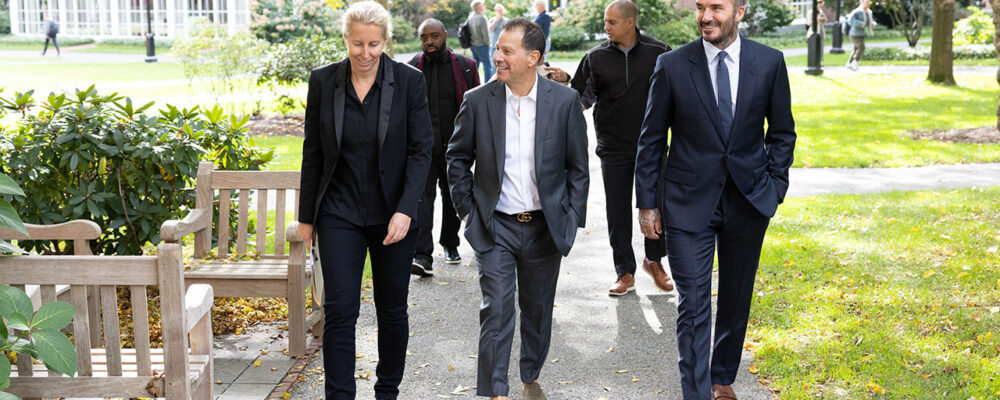The idea of supporting social change has propelled impact investing assets to more than $1 trillion. But what if those funds aren’t as impactful as investors expect?
Recent Harvard Business School research indicates that while impact investors do behave differently in some important ways, the vast majority tend to invest in companies that are also able to raise capital from non-impact investors. More than half of funding rounds involving impact investors include co-investment with traditional, profit-motivated investors.
The study finds impact investors are more likely to invest in disadvantaged geographies and nascent industries, and they exhibit more risk tolerance and patience. However, the authors also find employee satisfaction tends to decline once an impact investment is made.
“In their mind, if they give a company $1 million equity investment, when nobody else was willing to do that, then that company has more capital and can do things that it couldn’t otherwise do.”
Doing well by doing good is an important trend in business generally and venture capital specifically, with the sphere of impact investing no longer niche as big players like Bain Capital and BlackRock dive in. One important question the HBS study tackles carefully is the question of “additionality”—would the portfolio companies of impact investors have been able to raise capital from traditional investors, or might they have been passed over because of their increased risk?
“Some impact investors care a lot about additionality. In their mind, if they give a company $1 million equity investment, when nobody else was willing to do that, then that company has more capital and can do things that it couldn’t otherwise do,” explains Shawn Cole, the John G. McLean Professor at HBS, who is one of the study’s authors. “But, if there were 20 other venture capital funds that would have been just as happy to give $1 million to that firm, then the capital isn’t additional. This seems to be the case for the majority of the portfolio companies we identify.”
However, Cole pointed out there are different approaches to impact investing. “Most of the dollars raised are deployed in funds seeking market returns, and many of those investors are quite happy to co-invest with traditional venture firms.” Impact investors may seek to influence portfolio companies in other ways.
Cole conducted the research with HBS colleagues Leslie Jeng, senior lecturer; Josh Lerner, Jacob H. Schiff Professor; Natalia Rigol, assistant professor; and Benjamin N. Roth, Purnima Puri and Richard Barrera Associate Professor.
A year-long database build
Because no truly comprehensive database for impact investing exists, the authors spent more than a year creating their own by compiling nine databases and lists. The authors then set out to track and compare companies and their basic characteristics.
After filtering through 2,747 potential impact investors, the authors wound up with 396 impact investors for their analysis. They looked for language that was more specific than “make the world a better place” and included big players like TPG Alternative & Renewable Technologies.
Using US census data, the researchers cross-referenced portfolio companies, finding some 84 percent matched. They also cross-referenced US impact investing companies with data from Revelio Labs, for an 83 percent match rate, to study what effect the investments had on target companies.
Additional value to traditional investing?
The key finding: Impact investment funds mostly buy stakes in companies that traditional financiers would have funded anyway.
Impact investors funded 6,066 firms in 8,125 rounds, representing about 2 percent of all venture capital and growth equity rounds, the authors show. Of the more than 8,000 deals, 60 percent include a traditional private co-investor.
“The takeaway is that the difference is not as large as you might think.”
Both traditional and impact investors had similar portfolio sizes, with roughly 24 companies with 31 investments each, and had operated for about a decade on average. Impact investor deals averaged about $5 million, lower than traditional investments of about $8.7 million.
“The takeaway is that the difference is not as large as you might think,” Cole says. “As an investor, you have a bit of a strategic choice.”
Where impact investing makes the most impact
Impact investors approach targets differently than traditional firms, the authors note. They focus on disadvantaged regions and emerging industries, allow for longer time horizons, and take more risk than traditional investors.
Impact funds tend to prioritize consumer staples, energy, financials, industrials, materials, real estate, and utilities. Impact investors, on average, target investments in countries with 23 percent less economic output—$9,400 per capita—than those of mainstream companies. Impact-only investments may require more patience, with a roughly 25 percent longer time to reach success.
“It’s not simply greenwashing in the sense that there are real differences between impact investing and non-impact investing,” Cole says. “But it’s a matter of degree.”
Areas for further research
The researchers found that employee satisfaction dropped twice as much when impact investors bought a stake in a company, compared to the decline after a traditional investment. That may cast some doubt on the social benefits of impact investing at early stages and deserves further study, they note.
The study also suggests that impact investments might benefit companies that can’t raise funds through mainstream channels most, the researchers say.
Reporting on impact investing is fast evolving. “There are a lot of really important questions that are hard,” Cole says. “Quite frankly, they may not even be answered in the venture capitalist space. Questions like ‘what are best practices for impact investing?’ Our hope is that these data allow us and other researchers to begin to shed more light on this important sector.”
You Might Also Like:
Feedback or ideas to share? Email the Working Knowledge team at hbswk@hbs.edu.
Image: Designer’s note: Illustration was creating uses images generated by Adobe and Midjourney artificial intelligence tools an image from AdobeStock/dataimasu
“Harvard Business School is the graduate business school of Harvard University, a private research university in Boston, Massachusetts. It is consistently ranked among the top business schools in the world and offers a large full-time MBA program, management-related doctoral programs, and executive education programs.”
Please visit the firm link to site





